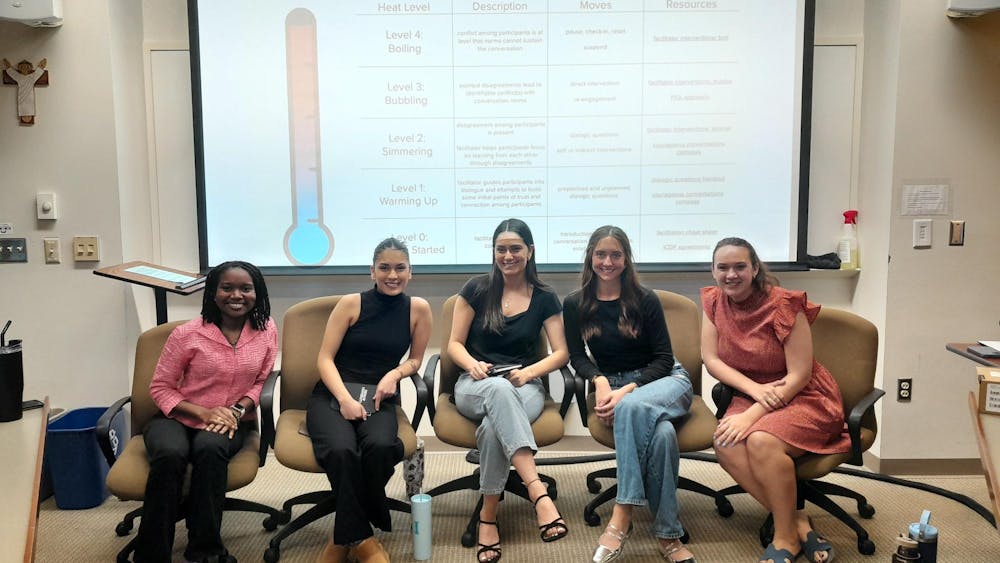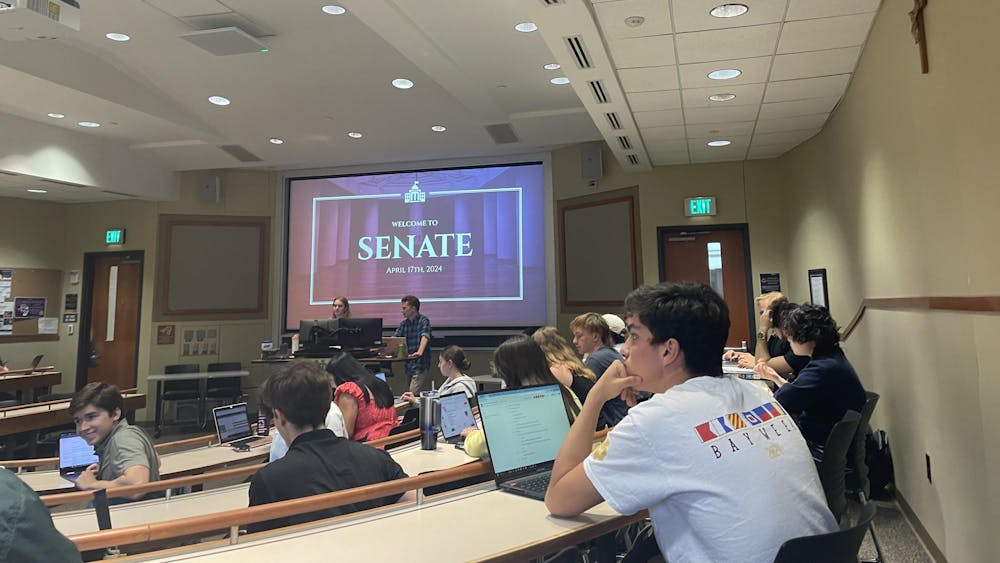In popular representations, stalking is often brushed off as a laughable issue. But Michelle Garcia, director of the national Stalking Resource Center, told Saint Mary's students stalking is no laughing matter.

"We toss around the word ‘stalking' too often because of movies and stalking being portrayed in a light way, like in comedies," Garcia said. "The Stalking Resource Center really wants to get across that stalking should not be taken lightly in any way."
The Saint Mary's Belles Against Violence Office (BAVO) hosted the event Monday. Megan Loney, senior member of the BAVO student advisory council, shared her own personal experience with stalking.
"We've all seen television commercials and the news portraying victims of stalking the Hollywood way," Loney said. "Unfortunately, stalking is overlooked."

Loney came in close contact with stalking when a friend's ex-boyfriend stalked her friend during her junior year of college.
"I was familiar with the basics, but I soon realized that stalking was way more than I could have imagined when my friend became the victim," Loney said. "After seeing the emotional effects on my friend, the issues became more personal to me."
Loney said the experience motivated her to become an advocate for stalking awareness.
"I couldn't change the perpetrator's actions, but I knew I could do my part as an advocate for making people aware of stalking and the issues individuals face when being stalked," Loney said. "Michelle Garcia and the Stalking Resource Center are great outlets for more information on stalking and a place to help victims."
The Washington, D.C.-based Stalking Resource Center, a branch of the National Center for Victims of Crime, is one of the nation's leading organizations on stalking, Garcia said.
Prior to joining the Center as its director in October 2006, Garcia worked with stalking victims for more than 20 years. She said definitions of stalking are flexible.
"Our definitions of stalking all vary from one another," Garcia said. "The Center defines it as a pattern of behavior directed at a specific person that would cause a reasonable person to feel fear.
"However, this definition is not what the state of Indiana uses, nor is it the definition Saint Mary's uses," Garcia said. "This is our working definition."
Each year, approximately 6.6 million people are stalked in the United States, Garcia said.
"We know this based on research from a study looking at stalking," Garcia said. "Last year, we released a national report which found how many people are actually stalked in one year."
Garcia said roughly 60 cases of stalking are reported on Saint Mary's campus each year. This statistic corresponds with the targeting of young people in cases of stalking.
"18- to 24-year-olds have the highest rate of victimization of stalking, which increases the rates of stalking on campuses," Garcia said.
In most cases, stalkers are not strangers to their victims and are often people in close proximity to the victim, such as co-workers, classmates, neighbors, family members and current or past romantic partners, Garcia said.
Stalkers are also taking advantage of the widespread use of technology to pursue their victims, Garcia said, and identity theft is another popular technique utilized by stalkers.
"Two-thirds of stalkers pursue their victims at least once per week, and 78 percent use more than one means of approach," Garcia said. "Weapons are used to harm or threaten victims in about 20 percent of cases."
Garcia said stalkers are driven by a variety of personal motivations, including rejection and obsession.
"Why do they do what they do? There may be some level of insecurity and some level of fear," Garcia said. "They may want to regain control in the relationship cases … There is no one single motivation for stalkers.
"Obsession of another person causes most cases we see on TV and with celebrities," Garcia said. "Often in these types, the offender often has some type of mental disorder and has some delusional belief that they are destined to be with the victim. This is a small percentage of cases, however."












